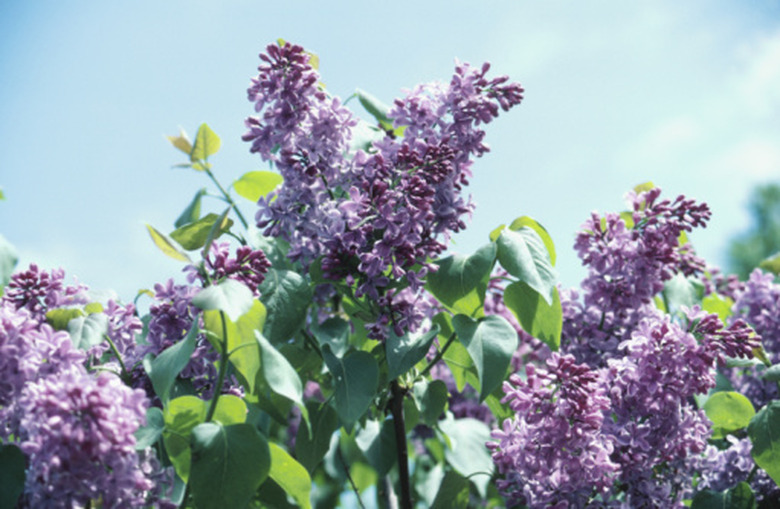Problems With Wilting Lilacs When Growing
Lilacs have long been a favorite of homeowners for the abundance of aromatic blooms that burst forth in the spring. With over 1,000 varieties of lilacs available for the homeowner, there will be one that fits perfectly into your landscape design. Once established, lilacs are an easy-to-care-for, low-maintenance hardy bush that has been known to outlive the original gardener. When you see wilting occurring on your lilac bush, it is an indication that either its environment or disease is affecting the health of the bush and should be remedied quickly.
Too Wet
Too Wet
Lilacs thrive in well-draining, moist soil but will show signs of wilting if the soil becomes waterlogged and soggy for long periods of time. Many times homeowners over water the area where lilacs grow, believing more water will increase growth and health. The opposite is true. Too much water diminishes oxygen in the soil by filling in air pockets with water, choking the roots of the lilac. When the roots cannot get oxygen to transport water uptake to the plant above, the leaves and growth of the bush will wilt. Remove any mulch around the lilac base to allow the soil to dry — and cut back on frequent watering, waiting until the soil has dried.
Too Dry
Too Dry
Established lilac bushes tolerate short periods of drought without damage, but longer durations of dry conditions can cause the leaves and stems of the bush to wilt. During long periods of drought conditions your lilac should be given 1 to 2 inches of water weekly to avoid wilting. Mulching around the bush will help the soil retain moisture for an extended time. Allowing your lilac soil to dry so much that the bush begins to wilt may affect the bush's ability to produce an abundance of fragrant blossoms the following year.
Verticillium Wilt
Verticillium Wilt
Verticillium wilt is a soil-borne fungi that affects hundreds of woody plant species, including lilacs. Because the disease infects the lilac bush through its root system, the foliage of an entire branch may show signs of wilting quite suddenly. Other symptoms of the disease are small, yellow leaves, leaf browning, slow growth and dieback of branches and shoots. Though there is no cure to verticillium wilt infection, most shrubs will recover over time. Removal of infected branches will prevent other fungi and disease from further infecting your lilac. Lilacs that are grown in fertile, well-draining soil with a slightly higher potassium than nitrogen level and are regularly and generously watered are less susceptible to the disease.
Bacterial Blight
Bacterial Blight
Bacteria blight of lilacs, also called shoot blight or blossom blight, affects lilac bushes usually in the spring during wet periods. Affected lilac bushes will develop black areas on the foliage and blossoms with both leaves and blooms showing wilt. The bacterium overwinters in debris and surrounding soil, infecting lilacs that have a wound or opening, via insects, wind or pruning tools. Infected branches need to be removed and destroyed immediately to stop the spread of bacteria blight to uninfected parts of the bush. Lilacs that have not been previously stressed by lack of water or nutrients are less susceptible to infection. A fungicide spray containing copper may help control the disease.
